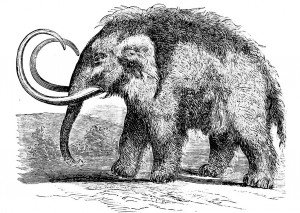FRIDAY, 1 JUNE 2012
In 1904, fossil hunter Dorothea Bate unearthed fossilized teeth on Crete but attributed them to a species of ancient elephant. Upon re-examination of the fossils, paleontologists Victoria Herridge and Adrian Lister noticed that the enamel of the molars had a characteristic pattern of loops and ridges only found in the teeth of mammoths. Due to the undersized teeth it was suspected that the owner would be much smaller than all recorded species of mammoths, but it was the discovery of an upper forelimb bone that meant its actual size could be estimated. The research, published in the Proceedings of the Royal Society B predicted that the mini mammoth was about 1.13 metres tall and weighed approximately 310 kilograms. These dimensions would give it the appearance of a chunky baby Asian elephant with curvy tusks.This pint-sized finding has been named Mammuthus creticus and is the most extreme example of ‘island dwarfism’ ever seen in mammoths putting it alongside other diminutive creatures known to once have once roamed Mediterranean islands including dwarf deer, hippos and elephants. The phenomenon of island dwarfism is believed to be the result of natural selection whereby island inhabitants develop a diminutive physique due to lack of predators and limited resources. This means that on an island, if you can’t shrink, you become extinct.
Written by Nicola Hodson
Doi: 10.1098/rspb.2012.0671

